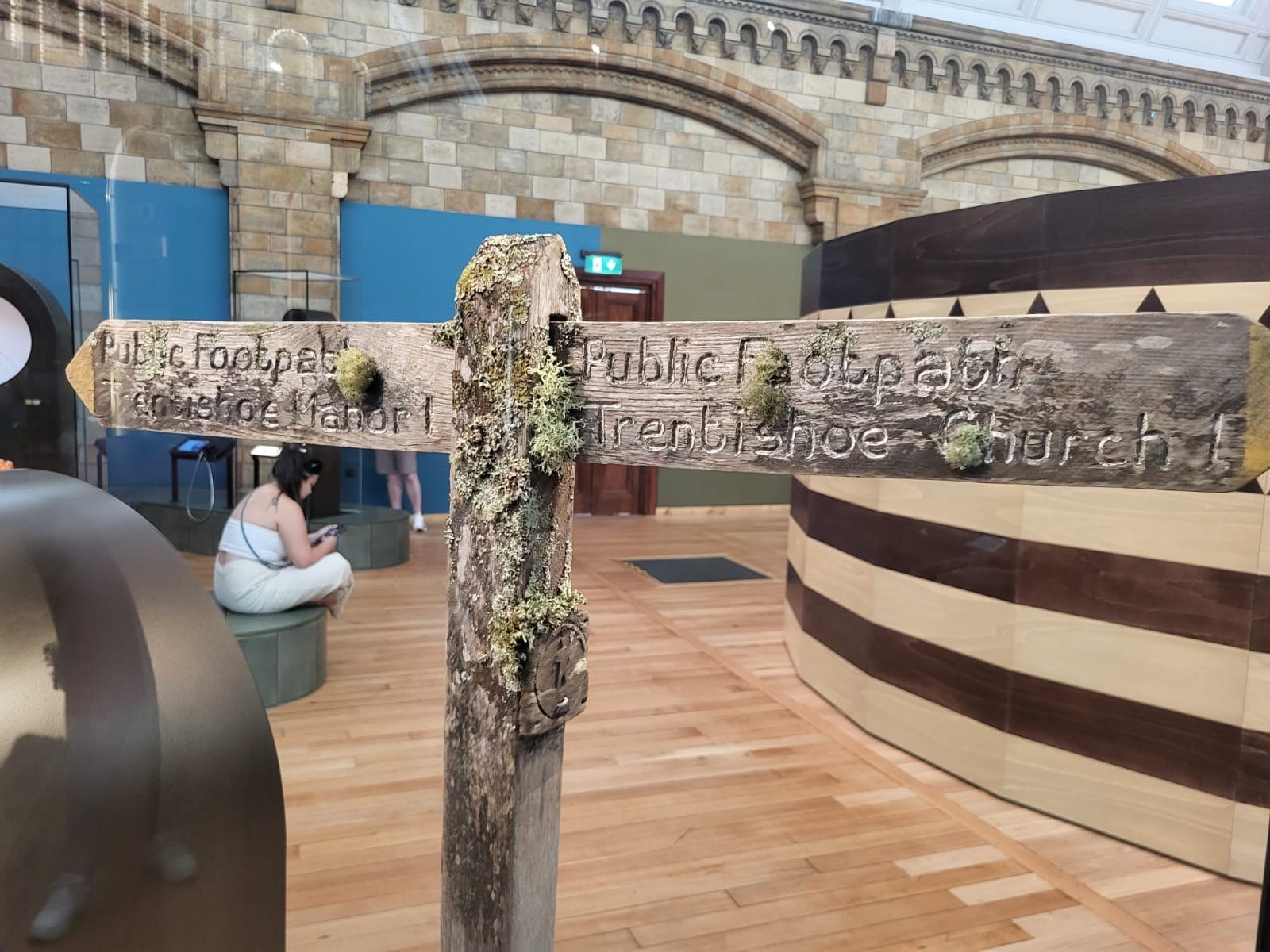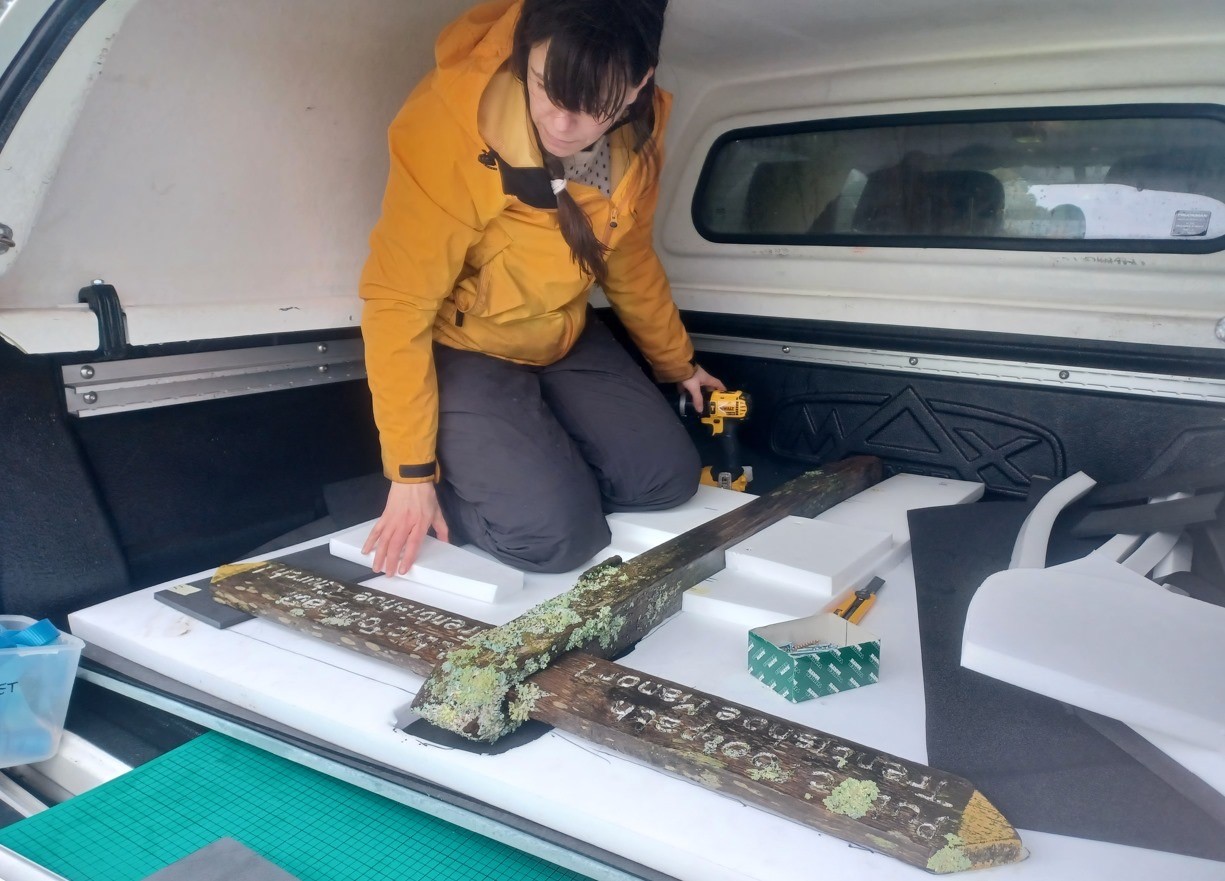Exmoor Fingerpost features in Natural History Museum
An old Exmoor National Park fingerpost is on display in the Natural History Museum, due to being covered in twelve rare lichens
The post features in an Exhibition called ‘Fixing Our Broken Planet’ as a prime example of a man-made item that has been recolonised by nature and of an item recovered from an area with clean air.
The Natural History Museum has been working with the National Park for some time to select the best exhibit, sending a renowned lichen specialist, Pat Wolseley to study the species growing on old Exmoor iconic signposts.
The post, originally put in April 2010 by ranger Tim Parish near Trentishoe Common was collected by lichen curator Gothamie Weerakoon and transported to London, to be featured in the ‘Fixing Our Broken Planet’ Exhibition.
Senior Public Rights of Way & Access Officer Sue Applegate explained more about the signpost: “There are currently over 3000 wooden fingerposts on Exmoor and a considerable number of them are home to the many species of lichen to be found in this area. We managed to spare one that was reaching the end of its life, so we could share the lichen’s beauty and offer an example of nature-colonised man-made object for visitors to the Natural History Museum in London. The aim is to help educate people through the 'Fixing Our Broken Planet' Exhibition, which explores nature-based solutions that can help us create a more sustainable world. These particular lichens have been ‘frozen in time’ by specialists at The Natural History Museum, for educational reasons, who came to collect the signpost. The Natural History Museum were very grateful and funded a new signpost, which hopefully will also attract more lichen species over years to come.”
Ranger Charlotte Wray assisted in the recovery of the post, she said: “We are so proud to produce our own fingerposts on Exmoor – they are milled from oak or chestnut, which has grown in Exmoor woodlands and the timber is a byproduct of our own woodland management (such as from fallen wood through storm damage). Some of the lichens growing on this fingerpost indicate the high air quality on Exmoor – which is made possible through the lack of pollution and the presence of these highly functioning woodland ecosystems. It’s such a joy to help tell the story of Exmoor, and we look forward to visiting the museum to see how the skilled conservators have gone about preserving these unique specimens.”
Sue explains that the original translocation didn’t run quite as smoothly as was hoped: “On the first post we organised for the Natural History Museum, the lichens didn’t like conditions and change of location and immediately perished. The second post was unfortunately stolen, but thankfully the third post is best example yet, so it all worked out in the end!”
If you would like to help support Exmoor nature, access and heritage projects, find out more here


